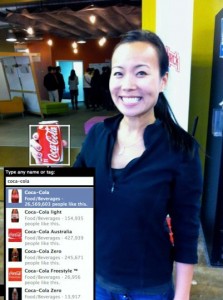Tagging the brand

A new feature of Facebook that allows users to tag pages in pictures has opened the world”™s largest social media site to a retroactive form of product placement.
The feature allows for posted photos on Facebook to be tagged with or by pages for brands. As long as the posted photo is set it to be seen by “everyone,” then the brands themselves or “fans” of the brands, can do the tagging in the photo enabling it to bring you to that brand”™s page.
Facebook released a statement saying through the new feature the company hopes to enrich the user experience by enhancing the design and capabilities of the Facebook platform.
“The beauty of it is that it”™s so simple,” said BJ Flagg president of Nurenu Brand Marketing, which specializes in social media marketing. “It”™s not unlike your personal friends being tagged in an album. Now you are able to tag that can of Coke you”™re holding, and have it link to Coke.com. That creates a whole new avenue, especially for consumer product brands.”
Flagg said it also puts more power in the hands of the consumers that can use or misuse the new feature to support or antagonize a brand.
“You can now tag the product because you like it, but there will be those that tag to other pages for fun or for a negative reaction,” Flagg said. “What that means is that these brands have to be even better watchdogs, something that many companies on Facebook already struggle with.”
Flagg said that though there may be drawbacks for business the specific demographic data that this feature makes available is tremendous.
“You”™ll be able to see exactly where, when and how your customer uses your product,” said Flagg. “You can now comment on your customers page when you see they are wearing the sweater they bought at your store. These are very interesting analytical insights and can give more focused readings of how a brand operates.”
Flagg said this is the type of information that can cause a brand to redefine their demographic and even set new goals all together.
“You”™ll expect large brands to dive head first into this because it hits the hard to reach highly valued sweet spot of 18- to 24 year-olds,” Flagg said. “An unexpected revelation looks to be the hyperlocal ability of this feature; small local brands will be able to be in touch with their customers as well as the customers”™ friends, the immediate potential customers. That”™s huge thing for a small brand or business and a real chance to build a community and conversation.”
Currently only brands and products, or people are categories that can be tagged, though Facebook has said it is working on expanding the page-tagging to other categories such as businesses storefronts or locations.